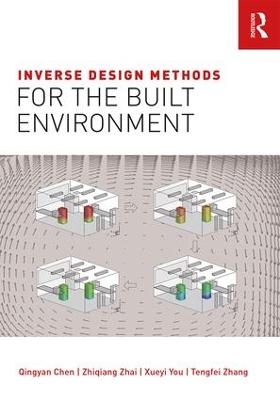
Inverse Design Methods for the Built Environment
Seiten
2017
Routledge (Verlag)
978-1-138-20498-0 (ISBN)
Routledge (Verlag)
978-1-138-20498-0 (ISBN)
The inverse design approach is new to the built environment research and design community, though it has been used in other industries including automobile and airplane design. This book, from some of the pioneers of inverse design applications in the built environment, introduces the basic principles of inverse design and the specific techniques that can be applied to built environment systems. The authors' inverse design concept uses the desired enclosed environment as the design objective and inversely determines the systems required to achieve the objective.
The book discusses a number of backward and forward methods for inverse design. Backward methods, such as the quasi-reversibility method, the pseudo-reversibility method, and the regularized inverse matrix method, can be used to identify contaminant sources in an enclosed environment. However, these methods cannot be used to inversely design a desired indoor environment. Forward methods, such as the computational-fluid-dynamics (CFD)-based genetic algorithm (GA) method, the CFD-based adjoint method, the CFD-based artificial neural network (ANN) method, and the CFD-based proper orthogonal decomposition (POD) method, show the promise in the inverse design of airflow and heat transfer in an enclosed environment.
The book describes the fundamentals of the methods for beginners, provides exciting design examples for the reader to duplicate, discusses the pros and cons of each design method and points out the knowledge gaps for further development.
The book discusses a number of backward and forward methods for inverse design. Backward methods, such as the quasi-reversibility method, the pseudo-reversibility method, and the regularized inverse matrix method, can be used to identify contaminant sources in an enclosed environment. However, these methods cannot be used to inversely design a desired indoor environment. Forward methods, such as the computational-fluid-dynamics (CFD)-based genetic algorithm (GA) method, the CFD-based adjoint method, the CFD-based artificial neural network (ANN) method, and the CFD-based proper orthogonal decomposition (POD) method, show the promise in the inverse design of airflow and heat transfer in an enclosed environment.
The book describes the fundamentals of the methods for beginners, provides exciting design examples for the reader to duplicate, discusses the pros and cons of each design method and points out the knowledge gaps for further development.
Qingyan Chen is the Vincent P. Reilly Professor of Mechanical Engineering at Purdue University, USA. He also serves as the Editor-in-Chief of the international journal Building and Environment. Zhiqiang Zhai is a Professor of Architectural Engineering at the University of Colorado at Boulder, USA. Xueyi You is a Professor of Environmental Engineering at Tianjin University, China. Tengfei Zhang is a Professor of HVAC at Dalian University of Technology, China.
1. Methods for Inverse/Optimal Design of an Enclosed Environment
2. CFD-Based Genetic Algorithm Method
3. CFD-based Adjoint Method
4. CFD-Based Artificial Neural Network Method
5. CFD-Based Proper Orthogonal Decomposition Method
6. Enhancement of the Inverse Design Methods
| Erscheinungsdatum | 26.07.2017 |
|---|---|
| Zusatzinfo | 25 Tables, black and white; 210 Line drawings, black and white |
| Verlagsort | London |
| Sprache | englisch |
| Maße | 174 x 246 mm |
| Gewicht | 680 g |
| Themenwelt | Technik ► Bauwesen |
| Technik ► Maschinenbau | |
| ISBN-10 | 1-138-20498-6 / 1138204986 |
| ISBN-13 | 978-1-138-20498-0 / 9781138204980 |
| Zustand | Neuware |
| Haben Sie eine Frage zum Produkt? |
Mehr entdecken
aus dem Bereich
aus dem Bereich
Grundlagen und Vorgehensweisen
Buch | Softcover (2021)
Springer Fachmedien Wiesbaden GmbH (Verlag)
37,99 €
Bemessung von Stahlbauten nach Eurocode mit zahlreichen Beispielen
Buch | Hardcover (2024)
Springer Vieweg (Verlag)
59,99 €
Kommentar zu VOB/C ATV DIN 18340, ATV DIN 18299
Buch | Softcover (2024)
DIN Media (Verlag)
69,00 €


